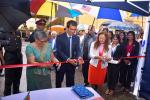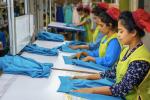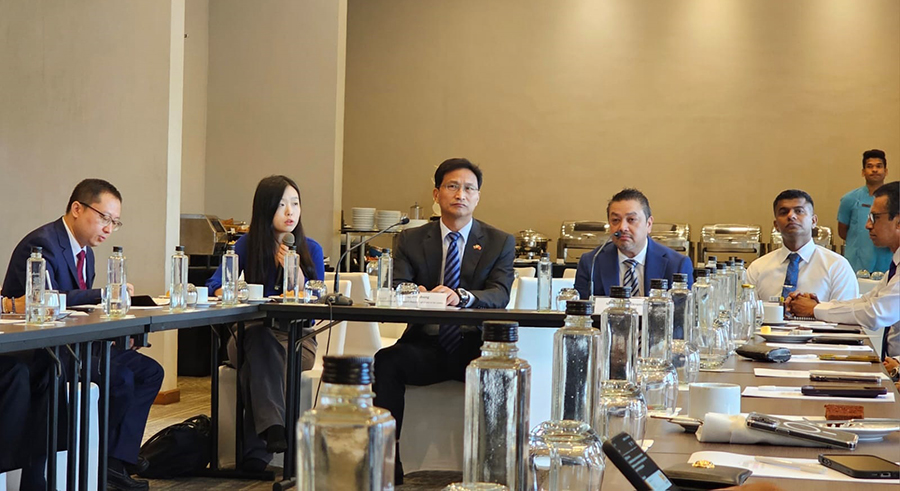The conversation, which involved plenty of back and forth, with both sides presenting their views and concerns, centred around avenues for collaboration, particularly focusing on business delegations and opportunities for mutual growth.
The ambassador of China, HE Qi Zhenhong, shared insights into the existing channels of cooperation between COYLE and the embassy.
Emphasizing the embassy’s role as a vital contact point, HE Qi Zhenhong highlighted ongoing cooperation with organizations such as EDB (Export Development Board) for exhibitions and trade fairs in China.
The ongoing projects in the North, particularly by Chinese company, Paragon, were highlighted, demonstrating China’s confidence in and commitment to Sri Lanka.
However, some concerns were also discussed, with both parties agreeing to work together in the future.
Highlighting tourism, COYLE discussed the potential for expansion of China’s tourism presence in Sri Lanka compared to the pre-covid numbers as well as other regions presently.
However, the Ambassador pointed out that significant growth of Chinese tourism in the country was already underway.
He emphasized that China has ascended to become the third-largest tourist origin for Sri Lanka, surpassing Russia and Ukraine.
However, Ambassador Zhenhong stressed the need for more concerted efforts, on the part of Sri Lanka, to promote the Island as a travel destination to China and the rest of the world, highlighting the nation’s welcoming environment and natural attractions.
Against the backdrop of global economic uncertainties, the ambassador conveyed China's strategic confidence and strategic determination.
The conversation also delved into the status of the Central Expressway construction project.
The ambassador acknowledged delays were attributed to economic challenges and the need for further foreign investment into Sri Lanka.
He shared that assessments from the International Monetary Fund (IMF) were pivotal factors influencing the project’s progression.
Lastly, the discussion touched on the responsibility of borrowing parties to manage funds better with credibility and efficiency.
While COYLE expressed Sri Lanka’s hope for continued Chinese support, the Chinese officials emphasized the need for borrowers to take responsibility in terms of utilization of funds.
It was made clear that Chinese investments were made with the intention of infrastructure development and not “debt trapping”, however, Sri Lanka failing to utilize funds correctly had resulted in certain challenges, compounded by changes on the political front and global issues such as the pandemic.
China took the opportunity to recognize its historic ties with Sri Lanka, and agreed to provide support, provided Sri Lanka effectively addresses internal issues, maintains policy consistency, and international credibility.
It was also communicated that Chinese financial institutions would offer proposals for debt and that Sri Lanka should be proactive in its response.
COYLE’s interaction with the Chinese Embassy reflects a proactive pursuit of collaborative opportunities.
The dialogue underscores the importance of partnerships in promoting economic growth and addressing shared challenges.
As the world navigates uncertain waters, the exchange serves as a testament to the power of cooperation in fostering stability and prosperity.
























